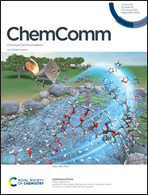A flexible, ceramic-rich solid electrolyte for room-temperature sodium–sulfur batteries†
Abstract
A sodium superionic conductor, Na3Zr2Si2PO12 (NZSP) ceramic, is a promising solid electrolyte (SE) and holds the potential to solve the safety and energy density problems of several sodium-based batteries. In particular, in room temperature sodium–sulfur (RT Na/S) batteries, the use of SEs can solve polysulfide shuttle effects. A significant challenge in the commercialization of NZSP is producing the ceramic in a thin and flexible form. Herein, we report a method to produce a thin (<250 μm thickness) and flexible “polymer in ceramic” type sodium ion conductor film from the erstwhile brittle ceramic film and demonstrate its application in RT Na/S batteries.



 Please wait while we load your content...
Please wait while we load your content...